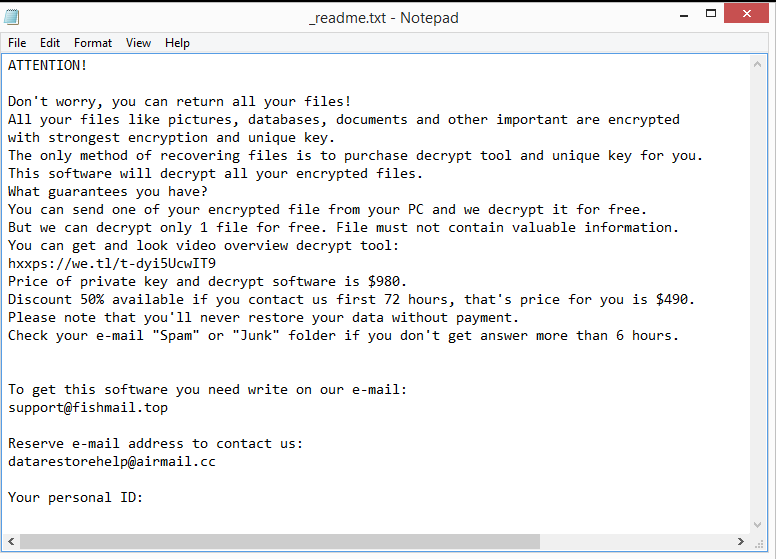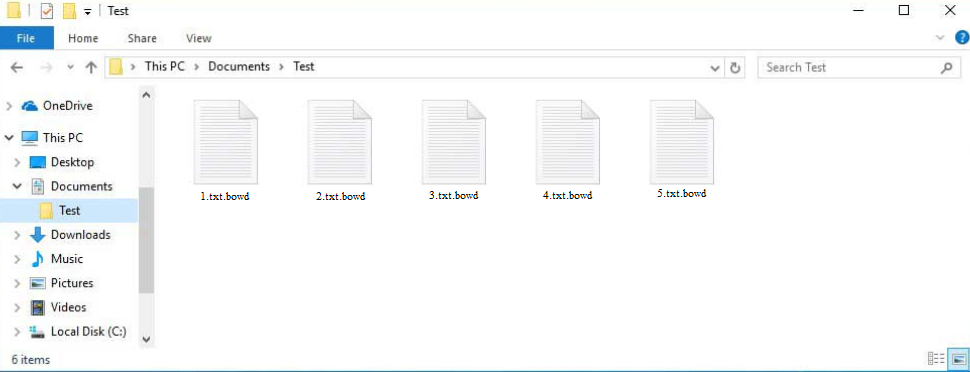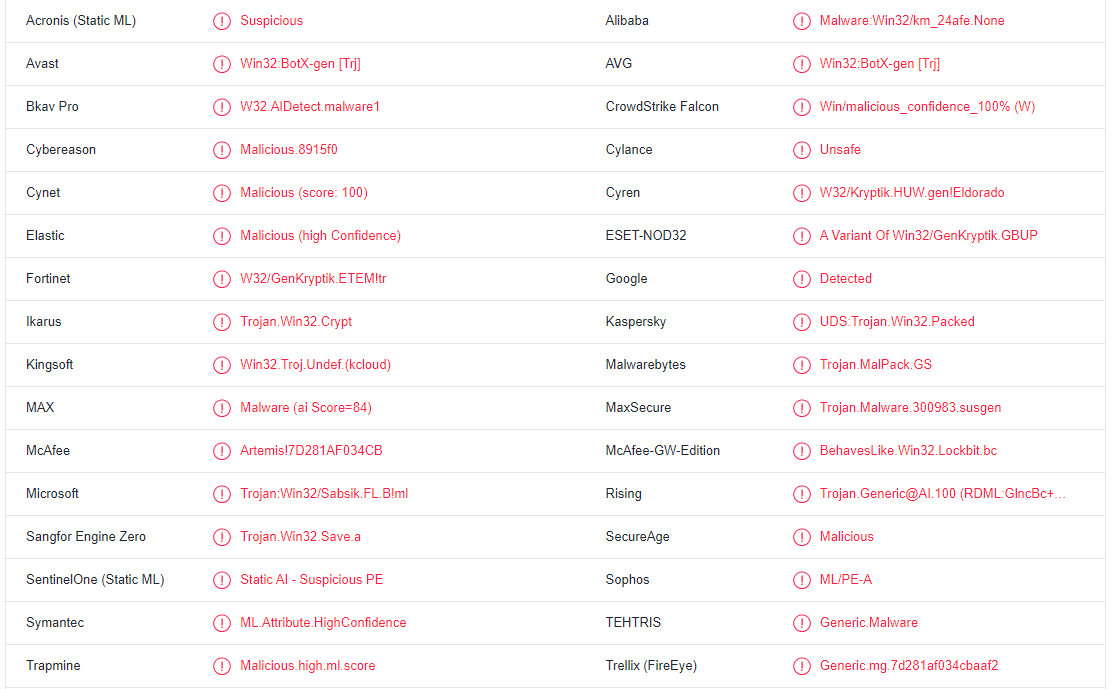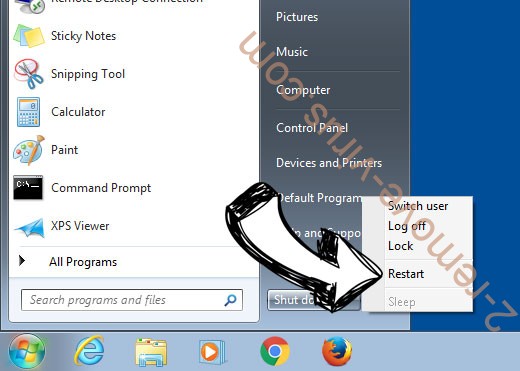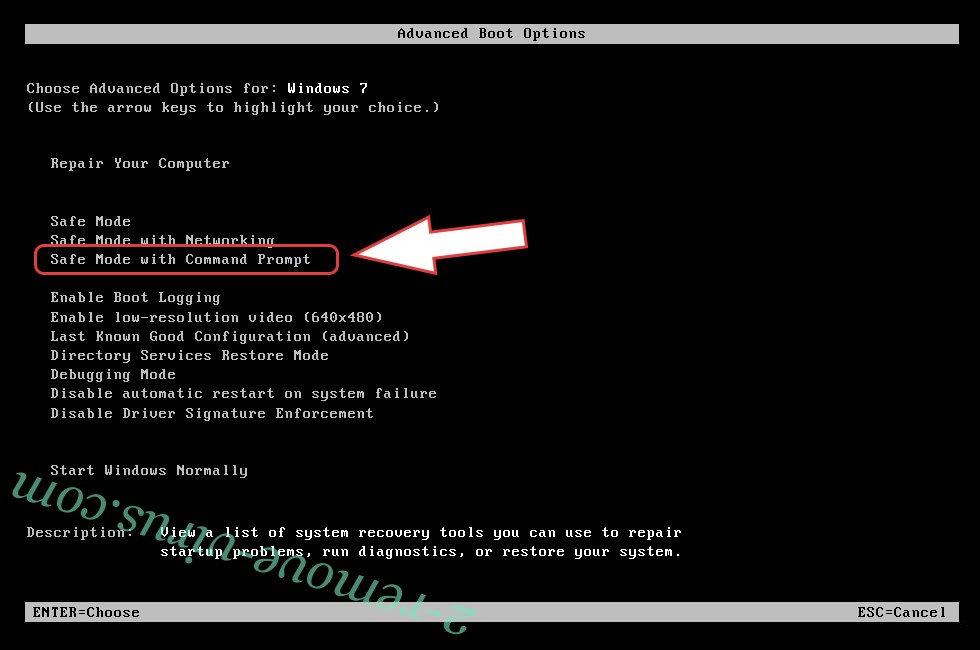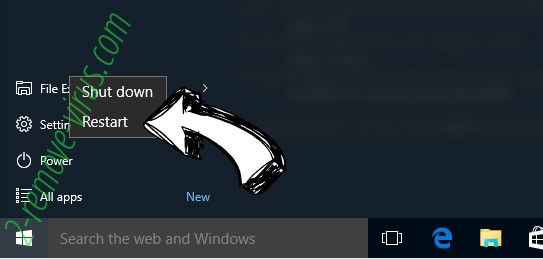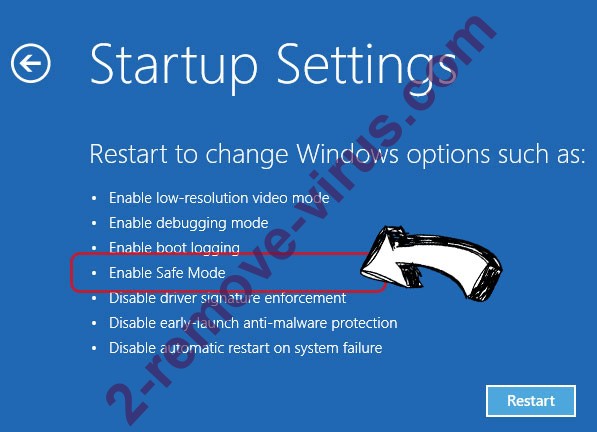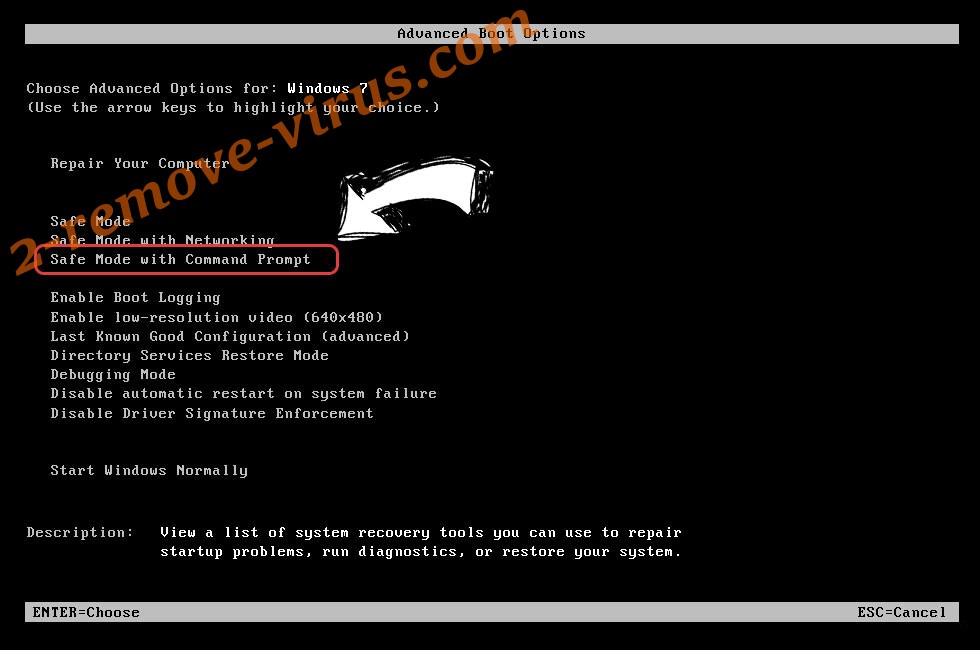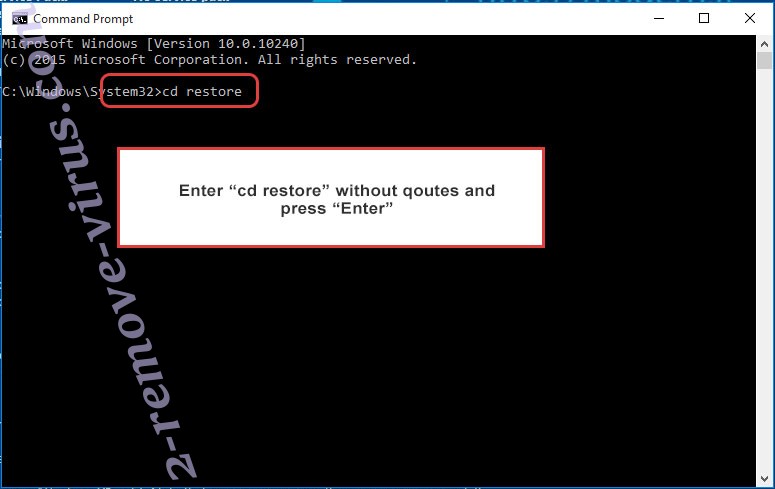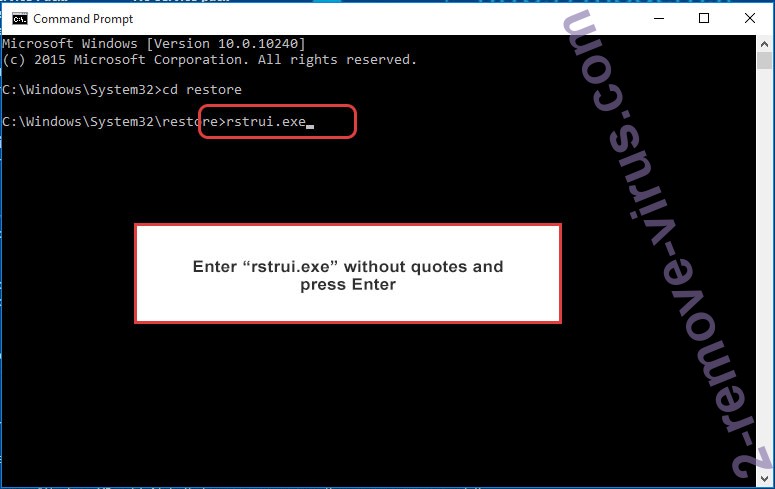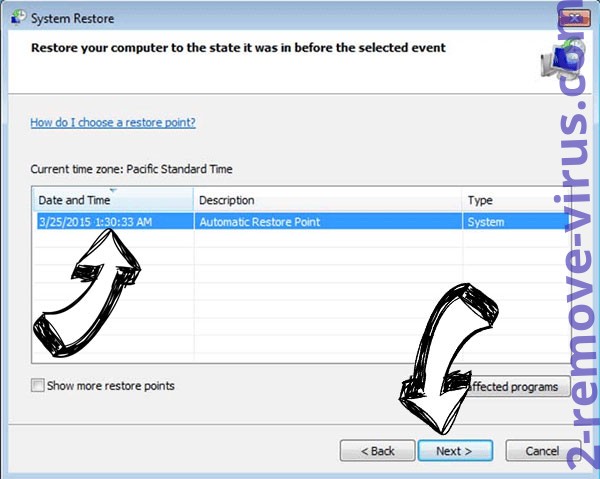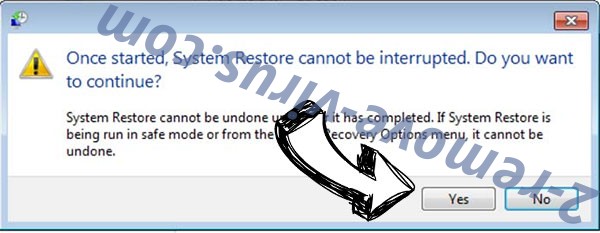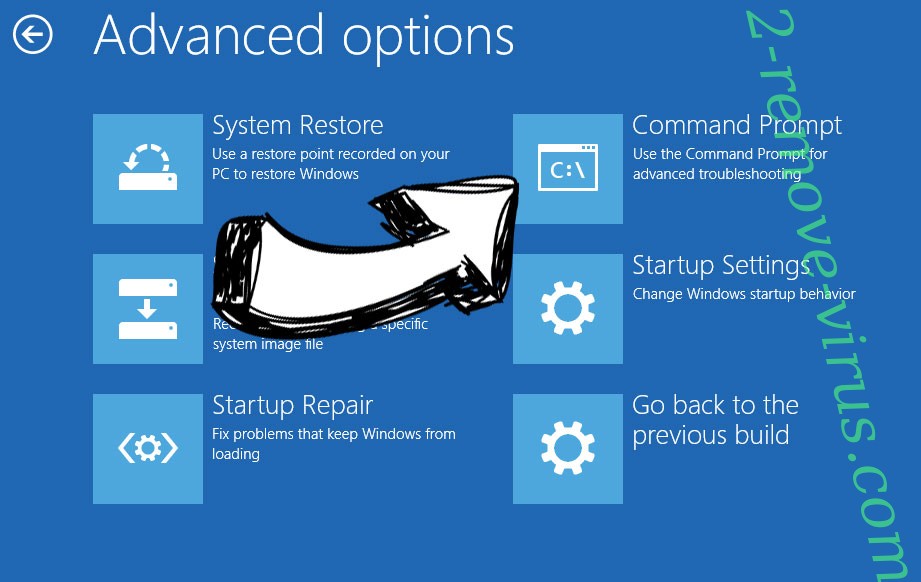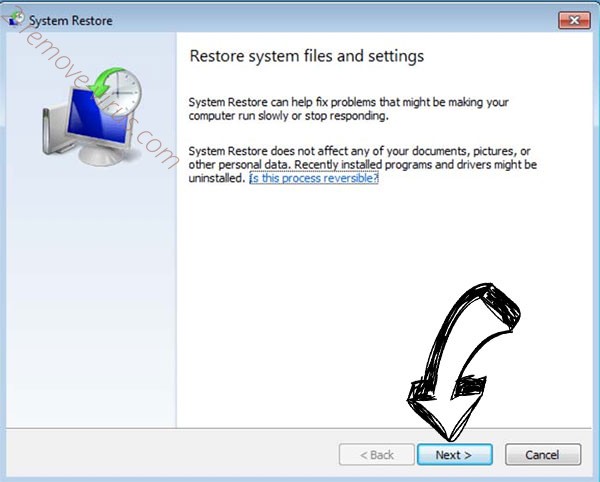Bowd ransomware is one of the most recent versions of the notorious Djvu/STOP ransomware. It can be identified by the .bowd extension that’s added to encrypted files. It’s a dangerous malware infection because once files have been encrypted, opening them will only be possible with a special decryptor. However, because only the malware operators have it, obtaining it will be difficult. They will try to sell the Bowd ransomware decryptor for $980.
As soon as the ransomware is initiated, it will begin encrypting files. Personal files, such as photos, videos, and documents are the main targets of ransomware. The .bowd extension will be added to each of these files. A text.txt file, for example, would become text.txt.bowd if encrypted. A _readme.txt ransom note will also be dropped in every folder that has encrypted files once the encryption process is complete. The note explains how to acquire the decryptor. Unfortunately, you are asked to pay a $980 ransom. If victims get in touch with malicious actors during the first 72 hours, they would also supposedly receive a 50% discount. There’s no way of knowing whether this is actually true or not without paying. However, we do not recommend doing that. You are dealing with cybercriminals, and they are unlikely to feel any obligation to help victims even if they pay.
There is currently no free Bowd ransomware decryptor that would allow you to recover files without a backup. Malware researchers are sometimes able to crack ransomware infections and release free decryptors but it’s not always possible. The thing about Djvu/STOP ransomware variants is that they use online keys to encrypt data. This means the keys are unique to each victim. Your particular key would be required for a decryptor to work on your files. The only ones who have those keys, however, are the cybercriminals behind this malware. A free Bowd ransomware decryptor is unlikely unless the keys are released. Although it’s unlikely to work, you can try using the free Djvu/STOP decryptor from Emsisoft.
As soon as the Bowd ransomware has been removed from your computer, you can begin restoring your files. Because manual Bowd ransomware removal would be quite a difficult process, it is highly recommended to use a reliable anti-virus program. If you don’t know exactly what to do, you can end up damaging your computer even more.
How is ransomware distributed?
A computer can become infected with malware in several different ways. Bad browsing habits are one of the main reasons why users end up with malware on their computers. Users are bound to get malware if they open unsolicited email attachments, click on odd links, use torrents to download copyrighted content, etc. Developing better online habits is well worth the time and effort.
One of the most typical methods for malware to infect computers is through users opening infected email attachments. Malicious emails are frequently disguised to appear as though they were sent by legitimate companies, even if the attempts are very poor. Malicious emails are typically rather easy to identify. The most glaring sign is grammar/spelling mistakes in emails supposedly sent by legitimate companies. For instance, malware is most likely hiding in the attached file if an email informing you about a package has several grammar and spelling mistakes. Grammar and spelling mistakes make an email look extremely unprofessional, therefore legitimate companies will make every effort to avoid them. Another warning sign is when an email addresses you using words like “User”, “Member”, and “Customer” instead of using your name. You will always be addressed by name in emails from companies whose services you use since it gives the email a more personal feel.
You can also determine whether an email is malicious by looking up the sender’s email address. If you receive an email asking you to do something (such as opening an attachment or clicking on a link), carefully inspect the sender’s email address. The email is probably malicious if the address looks random. Even if an email address seems legitimate, you should still verify that the sender is who they say they are.
It’s important to remember that malware campaigns can also be sophisticated and aren’t always as easy to identify. However, that is usually the case only when malicious actors target someone specific. Cybercriminals would need to have some of the target’s personal information in order to create a sophisticated malicious email. For example, such an email would address the user by name, be free of grammar and spelling mistakes, and include some specific details that would give the email credibility. Thus, it’s a good idea to scan all email attachments with anti-virus software or VirusTotal before opening them.
Finally, although you probably already know this, torrents are frequently used to spread malware infections. Because torrent sites are notoriously poorly monitored, anyone can upload torrents with malware in them. Torrents for entertainment-related content most often have malware in them. For example, malware is typically present in torrents for movies, TV shows, and video games. If you are a frequent user of torrents, you risk infecting your computer with malicious software. Not to mention that torrenting copyrighted content is essentially stealing.
How to delete Bowd ransomware
Ransomware is a very complex malware infection that requires many steps to completely remove. We advise against attempting to manually remove Bowd ransomware because you risk further damaging your computer. If you don’t remove Bowd ransomware with a reliable anti-virus program, it might not be completely gone and be able to recover later. If you were to connect to your backup while ransomware was still present, the backed-up files would become encrypted as well.
File recovery will be more difficult, if not impossible if you don’t have a backup. At the moment, backup is the only free way to recover files encrypted by Bowd ransomware. You can wait for a free Bowd ransomware decryptor to be released if you don’t have a backup. However, it’s uncertain when or even if it will be released. Nonetheless, we recommend you back up the encrypted files and check NoMoreRansom for a decryptor from time to time.
Bowd ransomware is detected as:
- Artemis!7D281AF034CB by McAfee
- Trojan:Win32/Sabsik.FL.B!ml by Microsoft
- Win32:BotX-gen [Trj] by AVG/Avast
- A Variant Of Win32/GenKryptik.GBUP by ESET
- UDS:Trojan.Win32.Packed by Kaspersky
- Trojan.MalPack.GS by Malwarebytes
Quick Menu
Step 1. Delete Bowd ransomware using Safe Mode with Networking.
Remove Bowd ransomware from Windows 7/Windows Vista/Windows XP
- Click on Start and select Shutdown.
- Choose Restart and click OK.

- Start tapping F8 when your PC starts loading.
- Under Advanced Boot Options, choose Safe Mode with Networking.

- Open your browser and download the anti-malware utility.
- Use the utility to remove Bowd ransomware
Remove Bowd ransomware from Windows 8/Windows 10
- On the Windows login screen, press the Power button.
- Tap and hold Shift and select Restart.

- Go to Troubleshoot → Advanced options → Start Settings.
- Choose Enable Safe Mode or Safe Mode with Networking under Startup Settings.

- Click Restart.
- Open your web browser and download the malware remover.
- Use the software to delete Bowd ransomware
Step 2. Restore Your Files using System Restore
Delete Bowd ransomware from Windows 7/Windows Vista/Windows XP
- Click Start and choose Shutdown.
- Select Restart and OK

- When your PC starts loading, press F8 repeatedly to open Advanced Boot Options
- Choose Command Prompt from the list.

- Type in cd restore and tap Enter.

- Type in rstrui.exe and press Enter.

- Click Next in the new window and select the restore point prior to the infection.

- Click Next again and click Yes to begin the system restore.

Delete Bowd ransomware from Windows 8/Windows 10
- Click the Power button on the Windows login screen.
- Press and hold Shift and click Restart.

- Choose Troubleshoot and go to Advanced options.
- Select Command Prompt and click Restart.

- In Command Prompt, input cd restore and tap Enter.

- Type in rstrui.exe and tap Enter again.

- Click Next in the new System Restore window.

- Choose the restore point prior to the infection.

- Click Next and then click Yes to restore your system.

Offers
Download Removal Toolto scan for Bowd ransomwareUse our recommended removal tool to scan for Bowd ransomware. Trial version of provides detection of computer threats like Bowd ransomware and assists in its removal for FREE. You can delete detected registry entries, files and processes yourself or purchase a full version.
More information about SpyWarrior and Uninstall Instructions. Please review SpyWarrior EULA and Privacy Policy. SpyWarrior scanner is free. If it detects a malware, purchase its full version to remove it.

WiperSoft Review Details WiperSoft (www.wipersoft.com) is a security tool that provides real-time security from potential threats. Nowadays, many users tend to download free software from the Intern ...
Download|more


Is MacKeeper a virus? MacKeeper is not a virus, nor is it a scam. While there are various opinions about the program on the Internet, a lot of the people who so notoriously hate the program have neve ...
Download|more


While the creators of MalwareBytes anti-malware have not been in this business for long time, they make up for it with their enthusiastic approach. Statistic from such websites like CNET shows that th ...
Download|more
Site Disclaimer
2-remove-virus.com is not sponsored, owned, affiliated, or linked to malware developers or distributors that are referenced in this article. The article does not promote or endorse any type of malware. We aim at providing useful information that will help computer users to detect and eliminate the unwanted malicious programs from their computers. This can be done manually by following the instructions presented in the article or automatically by implementing the suggested anti-malware tools.
The article is only meant to be used for educational purposes. If you follow the instructions given in the article, you agree to be contracted by the disclaimer. We do not guarantee that the artcile will present you with a solution that removes the malign threats completely. Malware changes constantly, which is why, in some cases, it may be difficult to clean the computer fully by using only the manual removal instructions.
